YoYo loach - Botia almorhae
Scientific name: Botia almorhae
Common name: YoYo loach
Family: Cobitidae
Usual size in fish tanks: 8 - 10 cm (3.15 - 3.94 inch)
014
Recommended pH range: 6.5 - 7.5
Recommended water hardness: 5 - 12°N (89.29 - 214.29ppm)
0°C 32°F30°C 86°F
Recommended temperature range: 24 - 28 °C (75.2 - 82.4°F)
The way how these fish reproduce: Spawning
Where the species comes from: South Asia
Temperament to its own species: aggressive/territorial
Temperament toward other fish species: peaceful
Usual place in the tank: Bottom levels
Origin
The Yoyo Loach, scientifically known as Botia almorhae (formerly Botia lohachata), originates from South Asia. It is primarily found in the rivers and streams of Pakistan, India, and Bangladesh. While initially thought to originate solely from Pakistan, it is now known that most of the specimens in aquariums are either wild-caught or bred in captivity in large ponds. In their natural habitat, Yoyo Loaches thrive in fast-flowing waters with sandy or pebbly substrates, often hiding among rocks and debris.
Appearance
Botia almorhae has a distinctive pattern that varies among individual specimens. They typically have a light grey body adorned with irregular dark stripes and spots that resemble the word "Yoyo," hence their common name. These patterns can change slightly depending on the fish's mood or environmental factors. The Yoyo Loach can grow up to 10 cm (4 inches) in length, making it a suitable candidate for medium to large aquariums.
Feeding and Diet
Yoyo Loaches are omnivorous and have a varied diet in the aquarium. They prefer to scavenge at the bottom of the tank for uneaten food, helping keep the substrate clean. Their diet can include high-quality granules, sinking pellets, spirulina wafers, and live or frozen foods like bloodworms, brine shrimp, and daphnia. They are also known to feed on Ramshorn snails, making them a useful addition for controlling snail populations in the tank. Occasionally, you can offer treats like beef heart to supplement their diet. It is best to feed them in the evening or just after the aquarium lights are turned off, as they are more active during the night.
Tank Setup and Environment
Yoyo Loaches thrive in a medium to large planted aquarium with plenty of hiding places. A tank of at least 120 liters (30 gallons) is recommended to provide ample space for a group of these fish. As they are natural bottom-dwellers, a soft substrate like sand or smooth, rounded gravel is ideal. They enjoy burrowing into the substrate, so avoid using sharp gravel that could damage their sensitive barbels. Add rocks, driftwood, and sturdy plants to create a habitat that mimics their natural environment and offers them shelter.
Since Yoyo Loaches are active at night and prefer subdued lighting, you can use floating plants to diffuse the light and create shaded areas in the tank. They are also known to be somewhat shy, so providing plenty of hiding spots is essential for reducing stress and encouraging natural behaviors. Ensure the tank has an efficient filtration system to maintain high water quality, as these fish require clean, well-oxygenated water. Moderate water flow is preferred, simulating the riverine environments they naturally inhabit.
Water Parameters
Yoyo Loaches do best in stable water conditions. They prefer a temperature range of 24-28°C (75-82°F), with a slightly acidic to neutral pH between 6.5 and 7.5. The water hardness should be kept at a moderate level, ideally between 5 and 12 dGH. Regular water changes and tank maintenance are crucial to keeping these loaches healthy, as they are sensitive to poor water quality. Ensure the filtration system is strong enough to handle the bio-load, especially when keeping them in groups.
Behavior and Compatibility
Yoyo Loaches are generally peaceful but can exhibit territorial behavior, particularly with other bottom-dwelling species. They do best in a group of at least 4-6 individuals, as this helps reduce individual aggression and encourages natural social behavior. When kept alone, they can become reclusive and stressed. In a group, they are more likely to be active, exploring the tank and displaying their playful nature.
While they are compatible with many community fish, it is advisable to avoid housing them with very small or slow-moving species that could be outcompeted for food. Good tank mates include other loaches, larger tetras, barbs, and gouramis. Avoid aggressive or highly territorial species that may stress the Yoyo Loaches.
Sexing
Sexing Yoyo Loaches is nearly impossible through visual observation. There are no prominent external differences between males and females, making it difficult for even experienced aquarists to distinguish the sexes. During the breeding season, females may appear slightly fuller-bodied when carrying eggs, but this is not a definitive method of sexing.
Breeding
Breeding Yoyo Loaches in captivity is extremely rare and not well-documented. There are no known cases of successful breeding in a home aquarium setting. In the wild, they are believed to have specific environmental triggers for spawning that are challenging to replicate in captivity. Most Yoyo Loaches available in the aquarium trade are wild-caught or farm-bred in large outdoor ponds. Due to the difficulty of breeding them in aquariums, those interested in breeding loaches might want to explore other species that are easier to breed in captivity.
Lifespan
Yoyo Loaches have a lifespan of 4-6 years in captivity, provided they are given proper care and kept in a well-maintained environment. High water quality, a balanced diet, and a suitable tank setup are key factors in ensuring they live a healthy and active life.
Short Description
Yoyo Loaches, with their distinctive patterns and playful behavior, are a delightful addition to a community aquarium. They are bottom-dwellers that thrive in medium to large planted tanks with plenty of hiding spots. Being nocturnal, they are more active during the evening and night. Their omnivorous diet and peaceful nature make them an excellent choice for aquarists looking to add an interesting and functional species to their tank, as they help keep the substrate clean by scavenging for food. However, they do require stable water conditions and a well-maintained environment to thrive.
Pictures
Thanks to Louise! Other pictures were bought from jjphoto.dk.
Video
Feel free to download our video here (49 MB, 640x480, mpeg, MPEG-1 type).
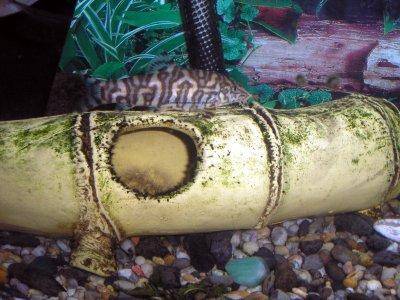





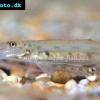 Horseface
Horseface  Horseface
Horseface 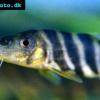 Bengal
Bengal 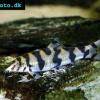 Burmese
Burmese 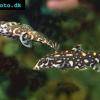 Myanmar
Myanmar 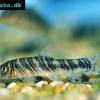 Zebra
Zebra 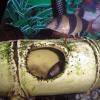 Clown
Clown  Dojo
Dojo 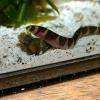 Kuhli
Kuhli 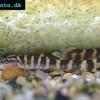 Loach
Loach 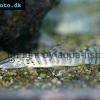 Tiger
Tiger 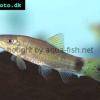 Tailspot
Tailspot 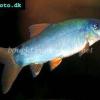 Blue
Blue